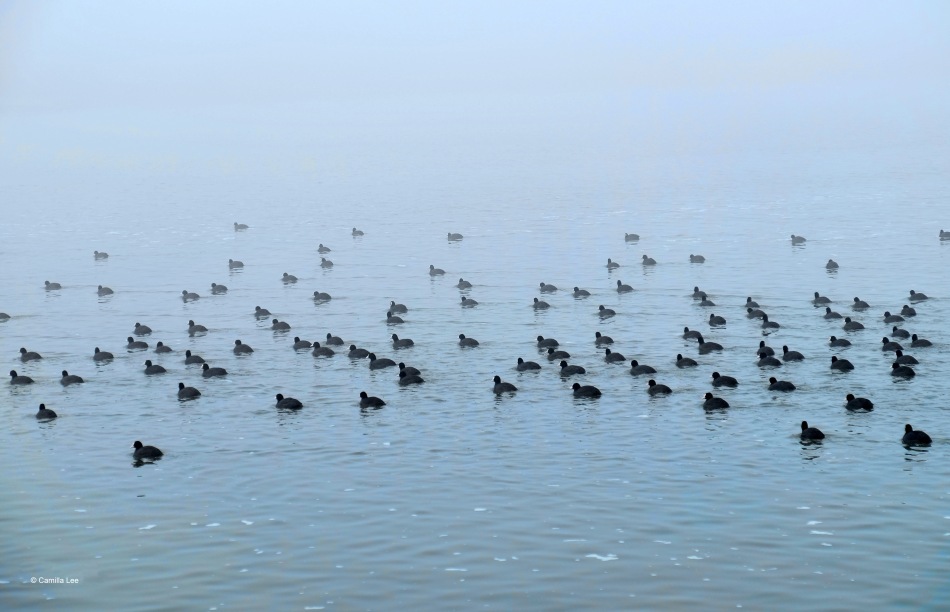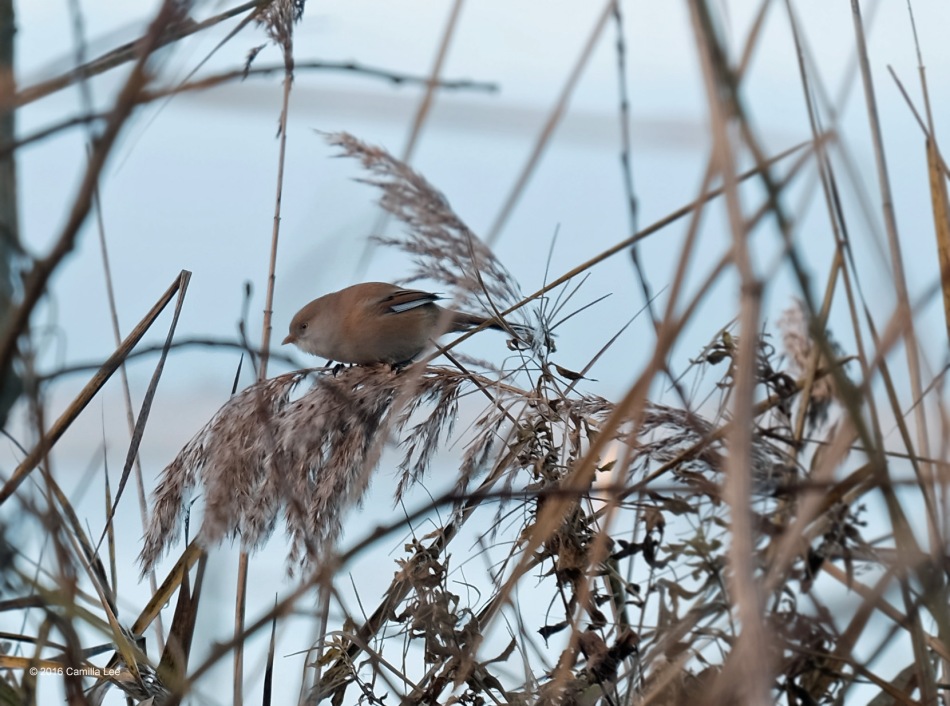2018-44
Week 44! A couple of days ago, I attended a workshop called “Moonlight with owls”. It was really nice, although a bit too dark to take pictures. But I got to see and hold a few owls, they’re such impressive and beautiful birds. Here’s a picture of Bean, a beautiful Bengal eagle-owl (Bubo bengalensis)

2018-9
It’s cold here in Amsterdam! People (and some birds, see below) are ice skating on the canals (link) 🙂


Ice skating for the first time
w44
A Eurasian Magpie (Pica pica) sitting on a waste basket. Isn’t he beautiful! Look at those coloured feathers and intelligent eyes.
Magpies are often maligned as pests, but they’re actually very interesting birds that are usually overlooked for both their beauty and their intelligence. They are closely related to crows, jays, and ravens; thus among the most intelligent family of birds (Corvidae). And after studying them, I’m convinced that magpies have a great sense of humour too! 🙂
Because magpies are often misunderstood, here are 3 interesting facts about them:
(i) Magpies don’t steal shiny objects. This has been established in several experiments, for example research published by Science Focus and the BBC.
(ii) Magpies recognize themselves in mirrors. European magpies have demonstrated the remarkable ability to recognize their own reflections in mirrors, something that was once thought to be a defining characteristic belonging only to humans. This might not sound that amazing, but out of countless species tested, only four ape species, bottlenose dolphins and Asian elephants have demonstrated this ability.
(iii) A group of magpies is called “a parliament”. They earned this title from often appearing in large groups, looking stately and cawing at each other.

And a little flower…

w43
Week 43! Two photographs of Grey heron (Ardea cinerea), the first one shows a juvenile individual and the second one an adult.
The grey heron is very common here in The Netherlands, also in urban environments. Here in Amsterdam, they are ever present and well adapted to modern city life. They hunt as usual, but also visit street markets and snackbars.


treecreeper
The Eurasian treecreeper (Certhia familiaris) is a small passerine bird. They are quite common here, but often difficult to spot because they’re so well camouflaged (as demonstrated in the lower picture).
They are often confused with the Short-toed treecreeper (Certhia brachydactyla), the easiest way to tell them apart is by song. The Eurasian (common) says “srrri” and the Short-toed says “tyyyt”.


wake-up
The rose-ringed parakeet (Psittacula krameri) is a common bird here in Amsterdam. There’s a group of them in my backyard, and they wake me up every morning! It’s a noisy species with an unmistakable squawking call. Without exaggerating, there can be 30 of them (sometimes more, especially in the winter) in one tree. They’re nice to look at, but I do wish I had mute button (or at least a snooze button) for them 😉
Here’s a cute little female, she didn’t scream but just sat there talking to herself (who doesn’t sometimes) which seem to be typical for them.


moorhen
A Eurasian common moorhen (Gallinula chloropus) with chicks, enjoying a sunny Sunday here in Amsterdam 🙂
In case anyone’s interested: There are some subtle differences in bill pattern, eye color, and shield shape between the American and the Eurasian moorhen. The easiest signs when it comes to identification are that Eurasian adults have mostly yellow lower mandibles, and a large and flat-topped shield is an indication of American.


alcedo
A male Eurasian Kingfisher (Alcedo atthis), photographed yesterday. Isn’t he beautiful! 🙂 I don’t have a long zoom lens; the first picture has been cropped (he has a small fish in his beak), the second one not (you have to look for the bird in that one).
About the scientific name: Alcedo is Latin and means “kingfisher” and Atthis was the consort of Cybele in Greek mythology. Atthis was also a Phrygian god of vegetation and represented the fruits of the earth, which die in winter only to rise again in the spring.


fog
A cold and foggy morning.. This picture was not taken today, because today is a beautiful sunny spring day here in Amsterdam 🙂

monophony
Perhaps a bit far-fetched, but these coots remind me of a musical sheet 🙂

Eurasian coot (Fulica atra)
lesson
I photographed a grey heron (Ardea cinerea) but forgot to change the camera settings so I accidentally used the ones from my previous photo shoot. I adjusted it and took some more shots but when I reviewed the images later, I found that I actually like this one. The (wrong) settings created a more dramatic look, and I also left it uncropped. Lesson learned: It’s good to experiment and I might make this mistake on purpose in the future. 😉

beards
The Bearded reedling (Panurus biarmicus) is one of my favourite birds, and I was lucky to encounter a flock a couple of days ago!
I don’t have a long zoom lens, so these images are heavily cropped (~30% of the original image!) though still reasonably sharp so I’m pretty pleased with the outcome.
(1) Male

(2) Female

w42
Week 42! Apologies for the slow update.. I haven’t used my regular cameras at all in the past months, but instead I’ve been shooting analogue with Diana Mini and an old Konica – first film rolls are developed and the results are Terrible but Fun 🙂 Anyway, today I went to the forest and I brought my PS as well:
(1) Grey heron (Ardea cinerea)

(2) Mushroom family

(3) Sporophyte of the moss

peregrine
A peregrine falcon (Falco peregrinus), photographed from my office window today. Not the best quality, it was quite far away and even though it’s one of the largest falcons, it was a tall order even for my trusty SX60. I think it’s a female, she was about the same size as a raven, males are smaller roughly the size of a crow.
The peregrine falcon is the fastest animal on Earth and in 2005 one was recorded stooping at a top speed of 389 km/h (242 mph). Impressive!

whinchat
A female Whinchat (Saxicola rubetra), swaying back and forth in the wind.. Captured with a shutter speed of 1/1000 s.

w15
Four birds and one rabbit 🙂
(1) Willow warbler (Phylloscopus trochilus)

(2) Another Willow warbler (Phylloscopus trochilus)

(3) A female House sparrow (Passer domesticus) finding ornaments for the nest

(4) Starling (Sturnus vulgaris) finding ornaments for the nest

(5) Lots of cute rabbits around here in Amsterdam ❤

w14
It’s a lovely, sunny Spring day here in Amsterdam today. Here are a 3 bird pictures I took this morning-
(1) Great tit (Parus major)

(2) Bearded reedling (Panurus biarmicus)
This was a first for me! It’s been on my wish list since I first saw it in a bird book. Unfortunately the photo isn’t very sharp, it’s difficult to get close to these wetland specialists..

(3) Dunnock (Prunella modularis)

mandarijneend
He’s back! It’s been 2.5 years since I last saw this male Mandarin duck (Aix galericulata), so I was delighted to spot him again yesterday. 🙂


denoise
I’ve been given a free trail version of Topaz DeNoise, a software to reduce noise in images without the need of a host editor like e.g. Photoshop. I’ve never used it before, nor have I any experience with other noise reducing software, however it’s pretty intuitive and easy to use. I’m sure the result could’ve been better with more practice and effort, but I’d like to share the first (and only) image I’ve edited so far.
The image shows a female Blackbird (Turdus merula), shot from a distance of roughly 15 meters at an ISO of 1000. I chose this picture for the experiment because half of the bird is in shadow and the other in bright light. Comparing the pictures below, you can see that the noise hasn’t been eliminated from the top image but it’s less obvious. The downside is of course that noise reduction cost some detail in the image, but I do think the edited version is more pleasant to look at.
What do you think? I’m interested in hearing your opinion and experience with noise reducing software!
(1) Edited version (no other software than DeNoise has been used):

(2) Straight out of the camera version:

w8
Five birds photographed in the Amsterdamse Bos today-
(1) European robin (Erithacus rubecula)

(2) Eurasian siskin (Spinus spinus)

(3) Short-toed treecreeper (Certhia brachydactyla)

(4) Great egret (Ardea alba)

(5) Grey heron (Ardea cinerea)

election
In 1962, there was an election to vote for the national bird of Sweden. The Eurasian blackbird (Turdus merula) was pronounced as the winner, but there were suspicions that the election hadn’t been totally fair (the main concern was that most votes represented the capital, Stockholm, and not the whole country) and therefore a new vote was arranged last year. 40 bird species were nominated, and via 4 voting rounds (with voters from the whole country) a true winner would be presented. In each of the first 3 rounds, 10 birds fell out of the competition so in the final (held at the Falsterbo Bird Show) there were 10 birds remaining. And the winner was…. The Blackbird. 🙂







